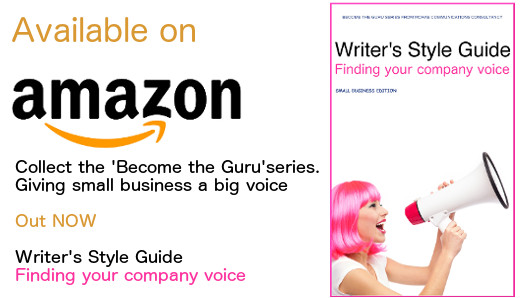 Until the turn of the century businesses were still ignoring the potential of the internet. Nowadays, however, the internet not only has a part to play, but actually dominates the landscape of almost every single industry.
Until the turn of the century businesses were still ignoring the potential of the internet. Nowadays, however, the internet not only has a part to play, but actually dominates the landscape of almost every single industry.
It is no longer ‘optional’ to have a website. Indeed there is a whole generation out there -the iGeneration as they are called – who do not know of a life without the internet. For them, the internet is the first port of call when they go to do their research or make a purchase. If you are not available to this audience online – then you don’t exist. The X and Y Generations are mirroring that behaviour. Even my granddad, who is 90 years old and part of the ‘Traditional’ generation, uses the internet for research!
So we are all agreed. Life and business will never be the same. The internet may be here to stay, but how many businesses really understand how to make their websites work for their business? If you are one of those organisations who threw together a website in haste a few years ago, you may not realise you are missing a few tricks. Here are a few tips to help you look at your website with fresh eyes, and perhaps you’ll feel inspired to give your website a much needed overhaul.
Putting you website to work
What role does your website plays in your business?Are you hoping to make a few sales, provide information, or just look pretty? I cannot stress how important it is to understand the reason why you have a website.Identify your goals and objectives. this will at least give you some parameters to measure your online success.
What frame of mind are your visitors in?
Where are your visitors on the ‘buyer’s journey’? What frame of mind are they in when they land on your company website? Are you communicating directly with your visitors? What can you give them? Are you addressing their needs and wants? Does the copy on your website demonstrate that you understand the challenges your visitors are facing? As you can imagine, it’s worth a huge amount of money to big corporations to know how people behave on the internet. They want to know what people like, what they dislike, what they do and what they don’t do. These corporations have spent millions of dollars researching this. Most of this information is in the public domain and you and I can access it – so make use of this information.
The new Marketing mix
Marketing has always been about the strength of your business, how well you know the market and how good you are at marketing. The internet has changed business and brought new elements to the mix. Marketing on the internet is about
- becoming an authority
- building a community and a network
- selling with respect – (not ‘pushing’ online because your prospective customers will just move somewhere else
Does your website take all of this into account?
Clear the clutter
There is one word that describes a mistake many companies make with their website. CLUTTER!
Most websites have too much clutter.Take a look at Google for an example of a website that works without clutter. Google want people to ‘search’. It is clear they want you to do. All good spring cleans start when you clear the clutter.
What is the last thing you want visitors to your site to do before they leave?
You might traditionally think about your wire frame in terms of your home page and down, and that is certainly one way to do it – assuming your visitors always arrive on your home page first. Instead, try and think about your website from the other way around. When you are planning your website think about the end result. Do you want them to email you, pick up the phone, or send an order to you? Figure this out and then create the path, going backwards. Your path should answer the following questions: Why me? (from your customer’s or visitor’s prospective. Why this website? What are the benefits? Does it solve their problems? Why you? What is your credibility? Why should I proceed through this website rather than someone else’s? Why now? What is the urgency for me to take action?
Embrace the technology
95% of websites out there don’t make any money. Unless you’re copying and learning from one of the outstanding 5%, your website is not going to make any money either. A natural conclusion here is if you want your website to get different results from everyone else’s you’ve got to do things differently from everyone else. So don’t treat your website as being peripheral to your business. The internet has grown and technology has matured to the point where your website needs to be tightly integrated with your whole business. Get it right, and your website can even be the engine driving a substantial portion of your profits.
Content is King
I’ve mentioned it before – but Content is King. Your website should not just be an online brochure, full of stuff all about YOU. This is fundamental to any kind of marketing, but tends to get forgotten about with your website more than anywhere else. No one is really interested in you personally or what your business actually does. They are interested only in what you can do for them. The vast majority of people coming to your website have a problem or need, and they’re looking for information and for ways for them to solve the problem or meet the need. They have their own rational self-interest in the forefront of their minds. The key here is to maximise traffic and conversions with relevant content.
Every second counts
Researchers found that when people arrive at a website, on average 50% of them will leave that website within 8 seconds. In other words, when someone arrives at your website, if you don’t do something to keep them there, at least 50% of them will leave within seconds. That’s just an average. For you it might be 60% or 70%. Think about how you surf the web. Think about the phrase “surf the web.” It means you go from one site to the next, to the next. The metaphor everybody heard when the internet started was, The internet and your website are like a big shopping precinct. We have to make sure that within 8 seconds we grab our visitors’ attention- and keep it – or they go to the next shop.
Attention seeking
With the last point in mind, there are a couple of things you really need to pay attention to. When you think about your website, your homepage or whatever page you send people to, ask yourself, “What’s the headline?” What grabs me when I arrive at your page? If you have a good headline, it keeps people reading. Use headlines and information above the fold to grab the reader’s attention If you don’t have a headline in the form of words, then your headline is whatever greets me when I arrive at your page. That could be a logo, a graphic or a piece of blank screen. We all have the equivalent of a headline. If you have nothing to grab the reader’s attention, they’ll be gone. Remember: the headline is the first thing to grab me and entice me… and it’s going to stop me from surfing to other sites. If you don’t have a captivating headline to keep the visitors there, just making that one, small change will make a big difference for you. If you’re using a headline on your direct mail or advertising and it works very well, don’t hesitate to duplicate it on your website.
Above the fold
Imagine you’re watching someone read a large newspaper you have to fold up to read. You have to fold that newspaper in half to read the top chunk of the page and then turn it over to read underneath. The newspaper phrase “above the fold” refers to what you can see on that top half. The equivalent on your website is what people see before they have to scroll down the page. Take a look at your website. What greets me on your website before I have to scroll down the page?This plays directly into the 8-second rule. Not only are people going to give you just a few second to get their attention, but a good proportion of them will not even bother scrolling down the page if you don’t give them a good reason to. If the bit that greets me on a website before I have to scroll down the page is a big picture, a graphic with no real purpose, or a boring bit of information like, “ This company has been in existence since 1974,” or, “We just moved offices,” or “We just won this award,” then… I’m probably going to leave.
Take a look at your website now and see if there is anything on there that could be tweaked with the above points in mind. You’ll be surprised at the difference it makes. Of course, this is just a sample of the best practice guidelines available. If you would like more information on how to make your website work for you, please drop me a line or complete the form on the Contact me page.
“No one is really interested in you
personally or what your business
actually does. They are interested
only in what you can do for them”
 Send to Kindle
Send to Kindle

